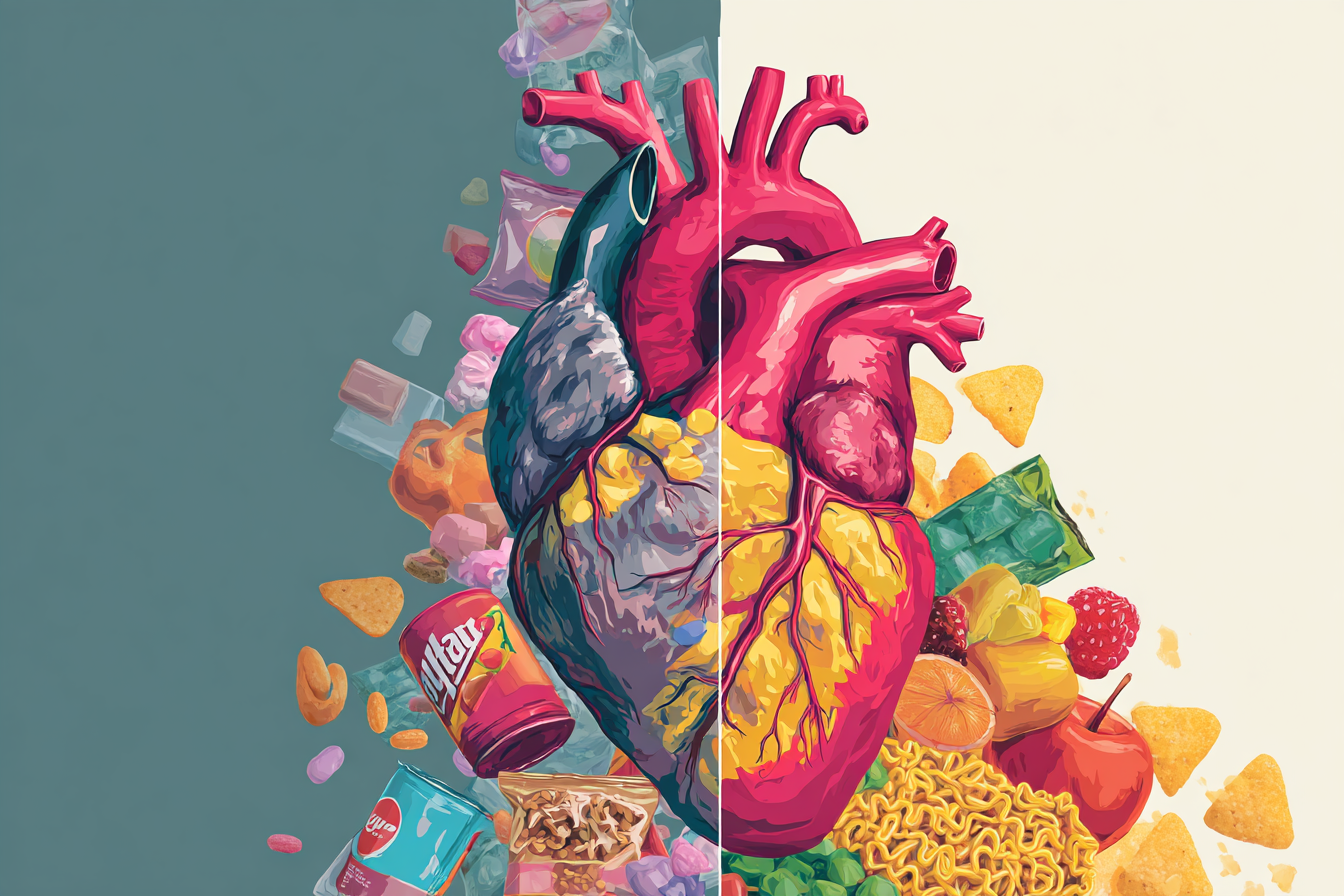In the last few decades, ultraprocessed foods (UPFs) have invisibly taken the places of supermarket shelves, school lunch buffets, and even hospital menus. The 2025 science advisory by the American Heart Association (AHA) has found that UPFs now provide over half of the calories in the typical American diet.
These foods can be convenient, inexpensive and delicious, yet as the research keeps demonstrating, there is a disturbing association between high UPF intake and adverse cardiometabolic health outcomes, such as obesity, type 2 diabetes and cardiovascular disease.
This blog unravels the latest revelations by the AHA, gaps in the evidence that still exist and what individuals and policymakers can do to minimize the risks.

What do UPFs Really Mean?
UPFs are industrially processed products that are prepared using additives, colorants, sweeteners, preservatives or ingredients that are not normally used in home kitchens. The Nova classification system is popular in the research and classifies the foods in four groups, the last group 4 named as ultraprocessed.
Examples of UPFs include:
Sugary drinks
Packaged snacks and candies
Refined breads and pastries
Frozen meat products such as hot dogs and deli meat.
Frozen ready to eat meals and instant noodles.
It is worth noting that not every UPF is a harmful one. Others, such as whole-grain breads or unsweetened soy milk, can also be a nutritional value, even within a balanced diet.
The effects of UPFs on Cardiometabolic health.
The advisory points out that UPFs can play a role in disease risk in a number of ways:
Nutrient Profile:
Majority of UPFs contain high saturated fat, added sugar and sodium and low in fiber and essential nutrients. This disproportion encourages weight gain, high blood pressure, and high levels of cholesterol.
Disturbed Appetite Control:
The natural structure of foods is frequently removed due to industrial processing to result in energy dense and easy to overeat foods. Research indicates that UPFs are able to modify the appetite hormones and promote overeating.
Gut Microbiome and Additives:
Certain additives such as emulsifiers can cause harm to gut bacteria and metabolism. There are also harmful contaminants that may be introduced by packaging like phthalates and bisphenols, which are associated with vascular problems and inflammation.
Increased Mortality Risk:
Meta analyses conclude that high UPF consumption increases the risk of the all-cause mortality by 21-66, and cardiovascular events by 25-58 as compared to low UPF consumption.
Are All UPFs Bad?
The AHA warns against regarding all UPFs as harmful. Some types of food like fortified cereals, tomato based sauces, or low sugar yogurts are both nutritionally advantageous and promote food access, especially where low income neighborhoods live.
The issue is on how to tell the difference between unhealthy habits and healthier processed foods with an HFSS (high fat, sugar, and salt) UPF.
This point is critical, particularly within the government food programs, where it may not be realistic and just to remove all UPFs.
Policy and Research Gaps
Although the arguments against UPFs are very convincing, the advisory also notes key gaps:
Absence of Mechanistic Clarity: It is not clear whether the harms are more of the nutrients, additives or processing itself.
Additive Safety: U.S. foods currently permit over 10,000 additives, many of which have not been re evaluated with regard to safety.
Equity Considerations: The minority population and lower income communities are disproportionately affected by HFSS UPFs because of aggressive marketing practices and because of poor access to healthier foods.
Sustainability Problems: UPF production is a source of deforestation, pollution and decreased biodiversity.
Consumer advice information.
The bottom line of the AHA is simple, reduce the intake of harmful UPF, particularly those that are rich in sugar, salt and fat. Practical steps include:
Make low processing foods like fruits, vegetables, nuts, beans, fish and whole grains a priority.
Carefully read labels of hidden additives and sweeteners.
Substitute sugary beverages with water, unsweetened teas or herbal teas.
Preplan meals to escape the convenience trap of junk food that is ready to eat.
Policy Recommendations
The recommendations advise multilevel interventions, which include:
HFSS UPFs front of package labelling.
Sugar and high salt food taxes.
Rewards to redesign healthier UPFs.
Even heavier control on food additives.
Nutrition education among the vulnerable populations.
Such initiatives are capable of not only aiding in the minimization of risk of diseases, but also enhancing equity and sustainability in food systems.
Conclusion
Ultraprocessed foods are not junk food. They signify a paradigm change in the way contemporary societies consume food-and the outcomes are being reflected in the increasing prevalence of obesity, diabetes and cardiovascular disease. It is quite explicit in the 2025 science advisory provided by the AHA: not all UPFs are dangerous, but the HFSS products which are prevalent in the U.S. diet are very dangerous.
To achieve more healthy aging and healthier hearts, the emphasis must be put on reducing the number of harmful UPFs and reformulating or taking into consideration the few nutrient dense ones. Meanwhile, policymakers should make efforts to control additives, restructure food spaces, and address fair access to real and whole foods.
Reference:
Vadiveloo MK, Gardner CD, Bleich SN, Khandpur N, Lichtenstein AH, Otten JJ, Rebholz CM, Singleton CR, Vos MB, Wang S; on behalf of the AHA. Ultraprocessed Foods and Their Association With Cardiometabolic Health: Evidence, Gaps, and Opportunities. Circulation. 2025;152:e00–e00. DOI: 10.1161/CIR.0000000000001365

